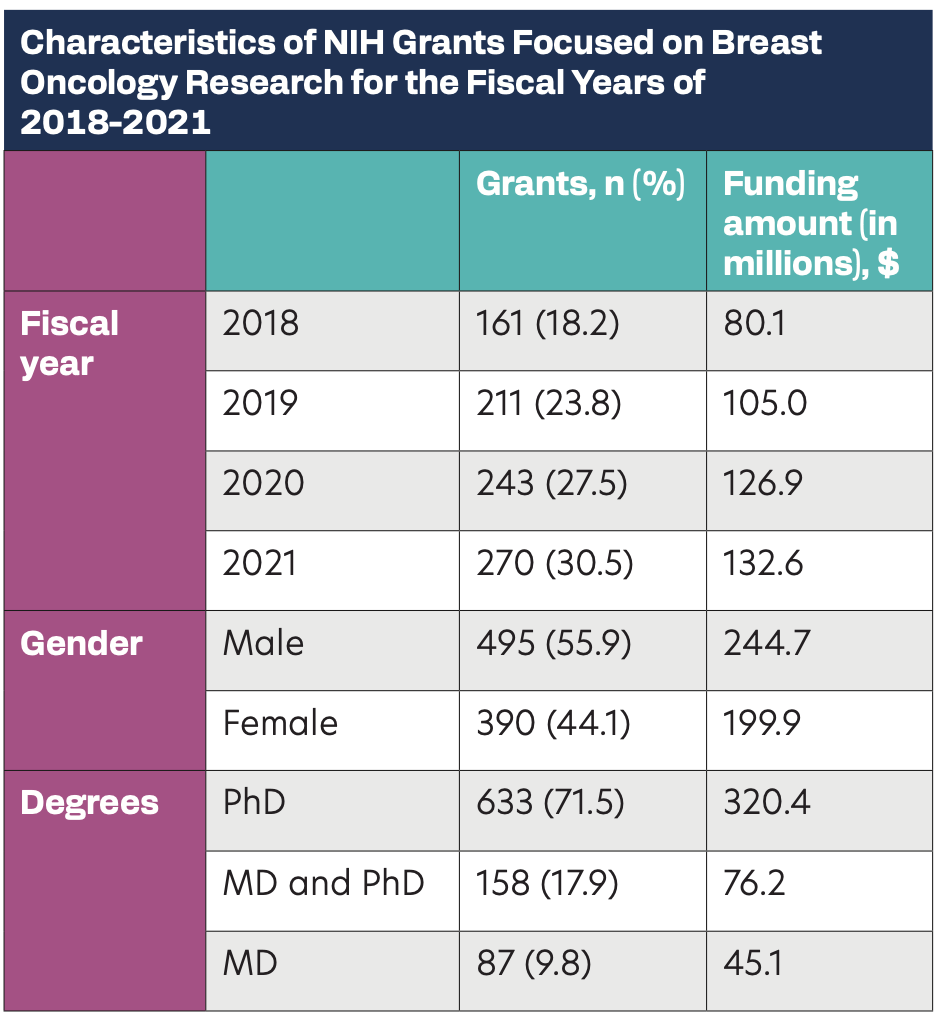3 Gender Disparities in the National Institutes of Health Funding for Breast Cancer
Background
There has been an underrepresentation of women in academic medicine, resulting in discriminatory distribution of research grants. This study examines the trend of funding allocation of R01 grants in breast oncology by the National Institutes of Health (NIH) with a specific focus on the distribution of funding between genders.
Materials and Methods
Characteristics of NIH Grants Focused on Breast Oncology Research for the Fiscal Years of 2018-2021

The data were retrieved from the NIH RePORTER (Research Portfolio Online Reporting Tools Expenditure) using breast oncology–related search terms from 2018 to 2021. The gender was categorized using Genderize. The number of citations, publications, H-index, and seniority were obtained from Scopus and Web of Science in December 2022. Consumer Price Index was used to adjust the funding amount to 2021 equivalent US dollars. Linear regression was used for analysis.
Results
A total of 885 NIH-funded R01 grants amounting to $444.6 million were awarded for breast oncology research. Women (n = 390; 44.1% [95% CI, 40.8%-47.3%]) received relatively fewer grants than men (n = 495; 55.9% [95% CI, 52.7%-59.2%]). From 2018 to 2021, there was a significant increase in the number of grants awarded among both men (90-155, P < .01) and women (71-115, P = .036). Similarly, there was a significant increase in the grant amount (in millions) awarded among men (43.4-76.5, P < .01) but not in women (36.7-56.1, P = .11). Of the 212 co–principal investigators (PIs), 133 (62.7% [95% CI, 56.2%-69.2%]) were men and 76 (37.3% [95% CI, 30.8%-43.8%]) were women. There was no significant difference in H-index (48 vs 44, P = .12), number of publications (158 vs 138, P = .08), and citations (13,272 vs 8092, P = .06) between the male and female PIs. The funding amount was significantly associated with the number of publications (β = .35, P < .01), seniority (β = .25, P < .01), and institution (P < .01).
Conclusions
Our analysis shows continued gender disparity, as only 44% of total R01 grants were awarded to females for breast oncology between the fiscal years 2018-2021. However, the proportion of discrepancy is lower as compared with other malignancies. A collaborative effort is still needed to bridge the gap and advance gender equality.
